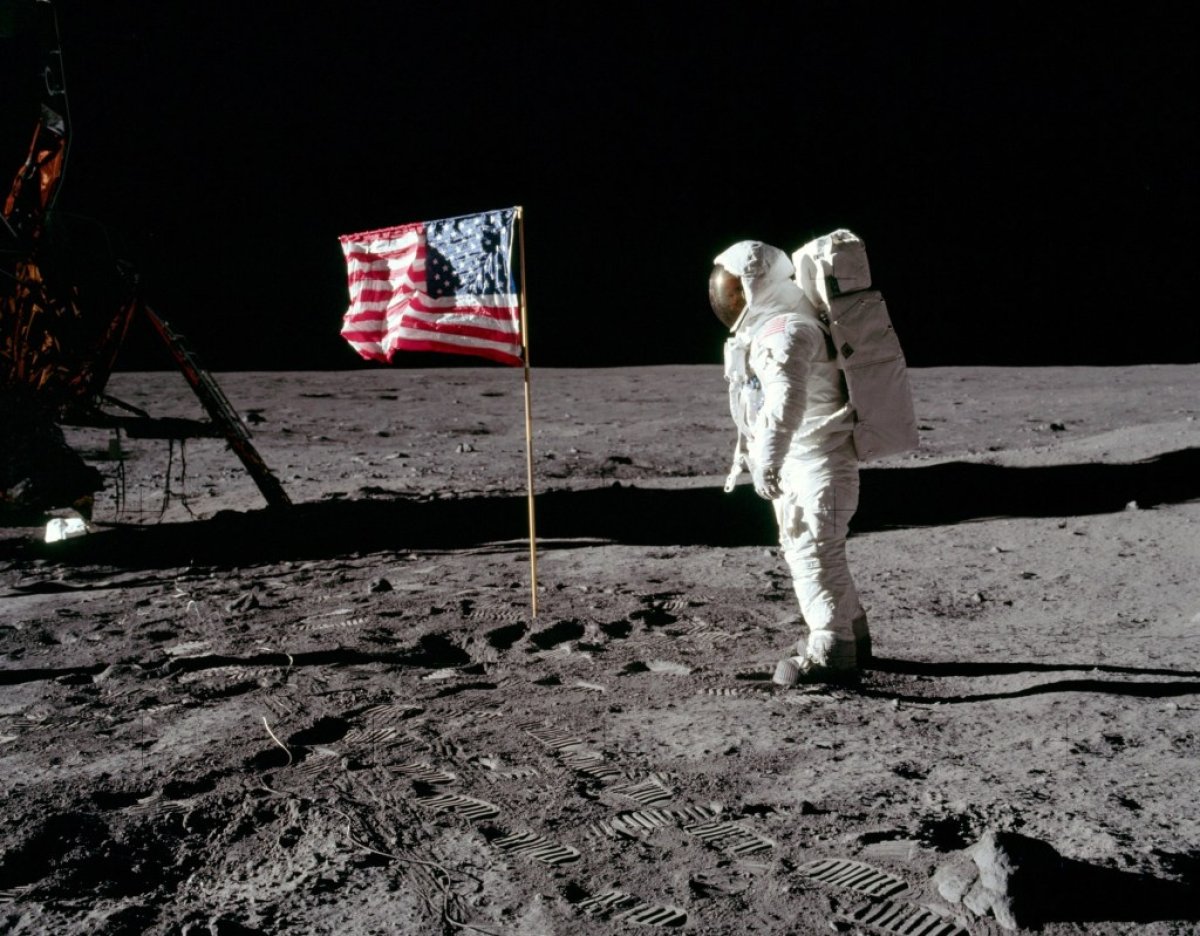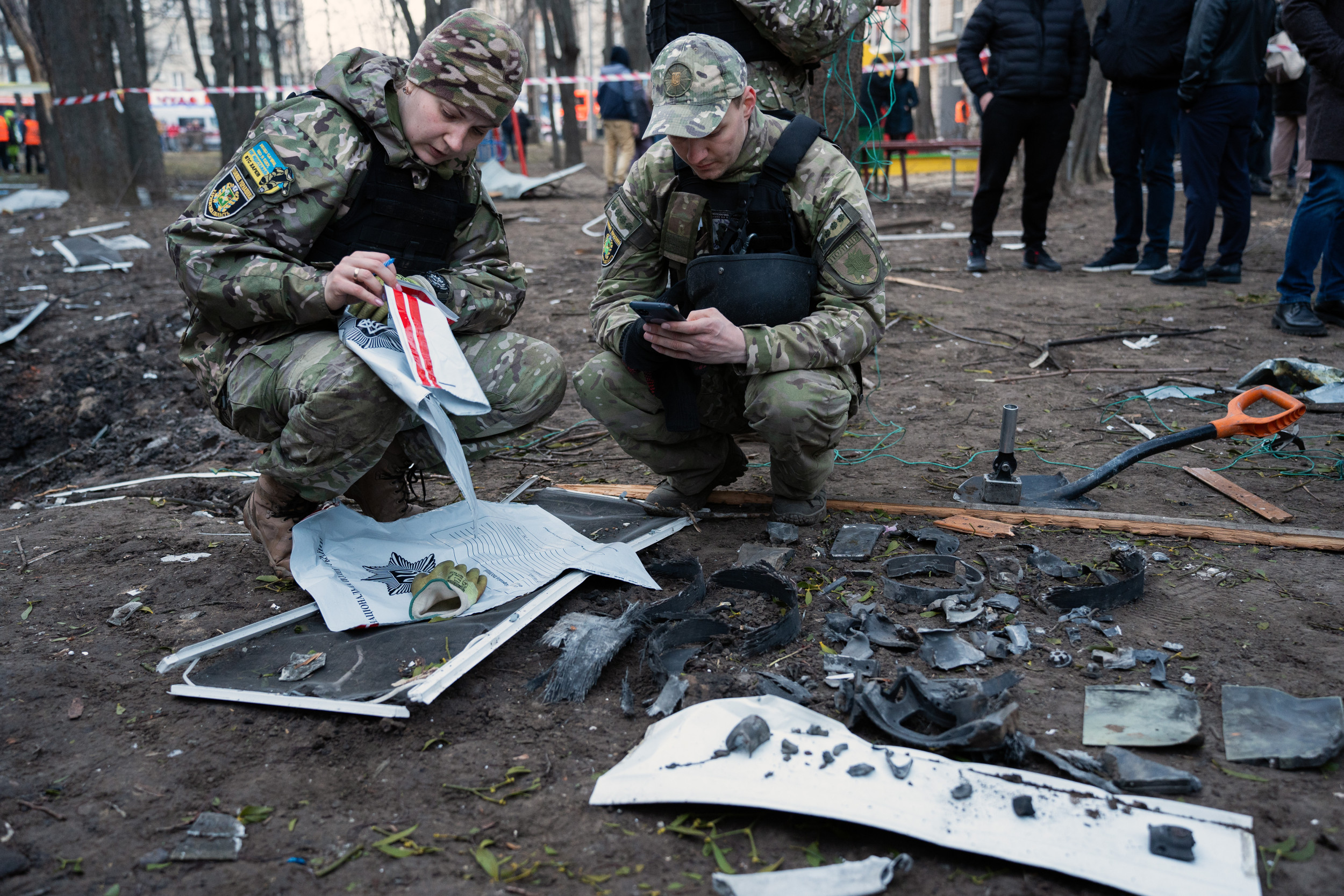A new NASA video shows the sites of each of the manned Apollo moon landings on the surface of our moon.
The video shows the phases of the moon flash by as time passes, with each of the landing sites appearing throughout the 60s and 70s.
The U.S.-made Odysseus aircraft landed on the moon on Thursday, marking the first time the U.S. has touched down on lunar soil since Apollo.

The Apollo program was a NASA initiative that spanned from the early 1960s to the early 1970s with the primary goal of landing humans on the moon and safely returning them to Earth. The Apollo missions—six of which successfully landed men on the moon—primarily touched down in the equatorial regions of the moon, as the video shows.
The first mission to land humans on the moon was the famous Apollo 11, on July 20, 1969, which resulted in astronauts Neil Armstrong and Edwin "Buzz" Aldrin becoming the first humans to set foot on the lunar surface. Michael Collins orbited above in the command module, with the lander setting down in the southwestern part of the Mare Tranquillitatis (Sea of Tranquility). This mission was followed only a few months later by Apollo 12 on November 19, 1969, with Charles "Pete" Conrad and Alan L. Bean landing in the Ocean of Storms area of the moon, near the 1967 Surveyor 3 probe.
There was a longer gap between Apollo 12 and 14 due to Apollo 13's major equipment failure, which caused the astronauts to abort their lunar landing. Approximately 56 hours into the mission, while the spacecraft was en route to the moon, an oxygen tank in the service module exploded. The explosion damaged the service module and caused the loss of oxygen and electrical power. The astronauts and ground control worked together to assess the damage, conserve resources and develop strategies to safely navigate the crippled spacecraft back home.
On February 5, 1971, the Apollo 14 mission became the third manned mission to land on the moon, with astronauts Alan Shepard and Edgar Mitchell landing in the Fra Mauro highlands. Shepard famously hit a golf ball on the lunar surface, making it the first and only golf shot on the moon.
Five months later on July 30, 1971, Apollo 15 landed humans on the moon for the fourth time. It was the first to use the Lunar Roving Vehicle (LRV). Astronauts David Scott and James Irwin spent over three days on the moon, conducting scientific experiments, exploring the Hadley Rille—a linear valley, in the Hadley-Apennine region—and collecting geological samples.
The video shows that the Apollo 12 and 14 landing sites were relatively close to one another on the moon's surface compared to the sites of the other missions. It also shows the length of time that the astronauts spent walking on the moon's surface, known as extravehicular activity or EVA. This increased with each mission, in large part thanks to the LRV.
The latter two manned Apollo missions both occurred in 1972. Apollo 16—manned by John Young and Charles Duke—landed on April 21, 1972 in the Descartes Highlands, near the Cayley Plains. Apollo 17, the final Apollo mission, landed on December 11, 1972. This mission marked the last time that humans walked on the moon, with astronauts Eugene Cernan and Harrison Schmitt spent three days on the lunar surface, exploring the Taurus-Littrow Valley near the Serenitatis Basin.

All these landing sites were on the side of the moon facing towards the Earth, and were fairly close to the equator of the moon. All of the landings also occurred around sunrise on the moon, as the lunar surface would have been coolest, and shadows from the terrain would have made navigation easier.
The Odysseus lander, owned by private U.S. company Intuitive Machines, landed near Malapert A, an impact crater close to the moon's south pole. The lander remains on its side, having tipped over after it landed. The Japanese lander that touched down on the moon a month earlier is located near a crater called Shioli, about 200 miles south of the Sea of Tranquility.
Do you have a tip on a science story that Newsweek should be covering? Do you have a question about moons? Let us know via science@newsweek.com.
Uncommon Knowledge
Newsweek is committed to challenging conventional wisdom and finding connections in the search for common ground.
Newsweek is committed to challenging conventional wisdom and finding connections in the search for common ground.
About the writer
Jess Thomson is a Newsweek Science Reporter based in London UK. Her focus is reporting on science, technology and healthcare. ... Read more
To read how Newsweek uses AI as a newsroom tool, Click here.








